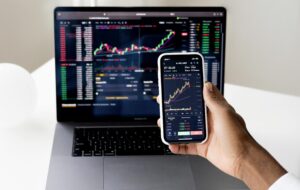Real-Time Economic Signals: Opportunities & Risks

Far Right Extremists Pardon
Background of Real-Time Economic Signals: Opportunities & Risks
In the current unstable economic environment, it is a frustrating type of reality to investors and analysts that official economic data is usually provided too late to take proactive action on.
The traditional measures of consumer expenditure, the labor market, and credit market conditions in the case of government reports lagging (like in shutdowns or other administrative delays) may be unavailable in weeks or months. Yet, decisions cannot wait.
This is where the consumer and labour real-time signals intervene, providing an alternative prism to analyze the economy, predict shifts in the market and identify possible recessions or soft landings.
Investors can use high-frequency private data to gain more immediate and actionable insights than more traditional lagging indicators.

Why Real-Time Data Matters
Here, we will consider the ability to read the economy without official statistics, assess the credibility of other indicators, and create a so-called dashboard in real-time to track the health of consumers and labor.
Formal economic data, such as the Bureau of Labor Statistics (BLS) payroll figures or the retail sales figures of the Commerce Department, are priceless, but they are lagging. By the time they’re released:
- The market environment might have changed.
- Policymakers already have taken action.
- Investors can fail to see the initial signs of economic distress or strength.
An example can be given of the COVID-19 pandemic when the Bureau of Labor Statistics was delayed in the publication of employment numbers but businesses and investors needed almost instant data to act on.
It is at that point that alternative high-frequency data sources became important. Lesson learned: In order to manage the current uncertainty, investors need to monitor the real-time consumer and labor indicators using both personal data and standard ones to create a comprehensive view of the economy.

What to Track Real-Time Economic Signals
Credit-Card Transactions
Consumer spending drives roughly two-thirds of U.S. GDP. High-frequency credit-card data from companies like Visa, Mastercard, and Plaid can provide near-instant insight into spending patterns.
Why it matters:
- Sudden drops in discretionary spending may signal consumer caution or early recession risks.
- Surge in essential spending, like groceries and healthcare, may indicate household resilience.
Practical tip: Track weekly or daily spending by category to spot shifts before monthly retail sales reports are released.

Payroll Data from Private Firms
While the BLS reports official payrolls monthly, companies like ADP provide real-time estimates based on their payroll processing services.
Advantages
- Provides a leading indicator of employment trends.
- Allows sector-specific analysis, e.g., tech vs. hospitality.
Investor takeaway
A consistent divergence between ADP data and BLS reports can flag lagging effects or unusual market dynamics.
Platforms like Indeed, LinkedIn, and ZipRecruiter offer a window into hiring trends. Tracking online job postings can indicate:
- Labor demand trends: Increasing postings suggest confidence in business growth.
- Sector-specific stress: Declines in hiring may signal early signs of layoffs.
Lead/Lag Analysis: Historically, a drop in job postings precedes rises in unemployment claims, giving investors a predictive edge.

Mortgage and Auto Delinquency Trends
Credit stress is a crucial economic barometer. Mortgage and auto delinquency rates, reported weekly or monthly by credit bureaus, indicate household financial health.
How to use:
- Rising delinquency rates may precede reduced consumer spending.
- Stable rates suggest households can sustain economic activity despite macro pressures.
Correlating Private Indicators With Official Reports
While private data is invaluable, it’s essential to understand its correlation with traditional indicators.
- Lead indicators: Credit-card spending, online job postings, and ADP payrolls often move ahead of official reports, offering early warning signals.
- Lagging indicators: Mortgage delinquencies and certain credit stress metrics may confirm existing trends rather than predict them.
Example: In 2022, online job postings declined a few weeks before the BLS reported slower employment growth, proving the predictive value of alternative data.
Building a Real-Time Economic Dashboard
To actively track these signals, investors can construct a “real-time dashboard” using a combination of publicly available and private data sources.
Core Components:
- Consumer Spending: Credit-card transaction volumes by category (retail, dining, travel).
- Labor Health: ADP payroll estimates, unemployment claims, online job postings.
- Credit Stress: Mortgage/auto delinquency rates, credit utilization trends.
Reliability and Limitations
While high-frequency private data is powerful, it’s not without risks:
- Sampling Bias: Credit-card data may underrepresent cash-heavy demographics.
- Overreaction: Short-term volatility in daily or weekly data can mislead investors if interpreted without context.
- Sector Skews: Certain platforms may disproportionately reflect specific industries.
Solution: Combine multiple data sources and track trends over several weeks rather than reacting to isolated spikes or dips.

Practical Toolkit for Investors
Select Indicators:
- Consumer: Credit-card spending, retail foot traffic.
- Labor: ADP payrolls, online job postings.
- Credit: Mortgage and auto delinquencies.
Set Baselines:
- Historical averages over 3–5 years for each metric.
- Identify normal seasonal fluctuations to avoid false alarms.
Track Weekly
- Use dashboards to monitor trends.
- Compare with official monthly data when released to validate signals.
Signal Interpretation
- Persistent declines in multiple leading indicators = caution.
- Resilient spending and hiring = potential soft landing.
Combine With Macro Analysis
- Factor in interest rates, Fed policy, and global supply chain risks.
- Don’t rely solely on one dataset; triangulate insights for stronger conclusions.
Case Study: Early Signals During the 2020 Pandemic
During early 2020, official employment data lagged behind the reality of the COVID-19 economic shock. Analysts using real-time spending and payroll data could detect:
- Sharp declines in restaurant and travel spending via credit-card transactions.
- Layoff trends reflected in ADP payrolls.
- Rapidly rising mortgage forbearance requests.
These signals allowed investors and policymakers to anticipate market stress before official GDP or employment numbers were published, demonstrating the tangible value of alternative data.
Authoritative Sources for Real-Time Economic Data
- ADP Research Institute – Payroll data and labor market trends.
- Bureau of Labor Statistics (BLS) – Official employment and unemployment stats.
- Visa & Mastercard Spending Insights – Consumer spending patterns.
- TransUnion, Experian, Equifax – Credit performance and delinquency trends.
- Indeed & LinkedIn – Online job postings and hiring trends.
- Federal Reserve Economic Data (FRED) – Historical context for trends.
Investor Takeaways
- Lead, Lag, and Triangulate: Track a combination of indicators to reduce blind spots.
- High-Frequency Is Not Perfect: Treat private data as a signal, not the final word.
- Dashboards Are Essential: Weekly monitoring helps investors react quickly to economic shifts.
- Early Warnings Enable Strategy: By spotting trends before official data, investors can position for growth or hedge against downturns.
Conclusion
Reading the economy without official data is not just a workaround—it’s a competitive advantage. Real-time consumer and labor signals provide early insight into market dynamics, enabling informed investment decisions even amid delays in official reporting.
By carefully selecting reliable indicators, monitoring trends, and understanding their correlation with traditional metrics, investors can navigate uncertainty, detect early signs of recessions, and capitalize on opportunities in a rapidly evolving economy.






